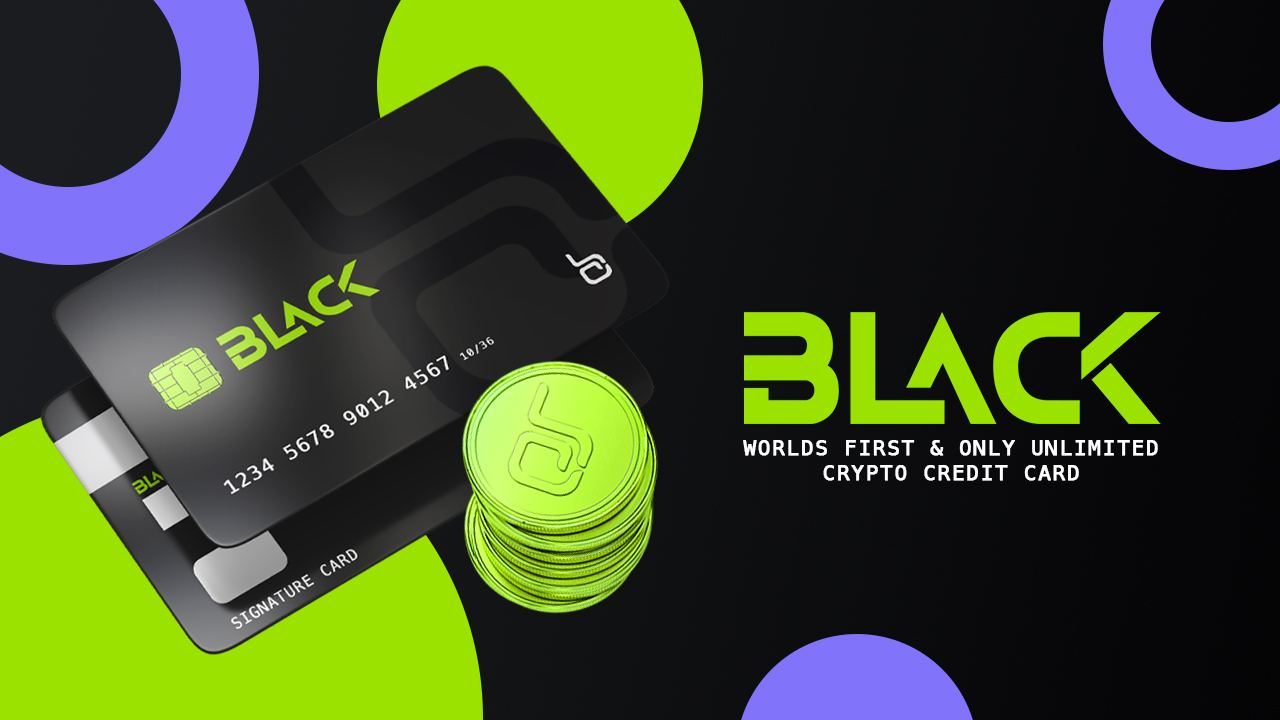Exploring The Big Cosmos Opportunities In 2023: Which Trends Will Shine?
Privacy, modularity, native stablecoins, custody, DAO tools, and other megatrends will make Cosmos shine this year.
Over the past two years, we have seen the Cosmos ecosystem grow from a handful of teams building early cross-chain channels to a thriving ecosystem of projects and companies building foundational applications and infrastructure to scale Web3 to the next 1 billion people.
In 2022, the Cosmos ecosystem began to gain the attention of the broader crypto industry, institutional players, and tech giants. We believe cross-chain, blockchain and decentralized application networks utilizing the Cosmos technology stack will be one of the most promising environments in the industry.
The narrative around sovereign dapps and blockchain interoperability is gaining traction across the industry, including Cosmos and its founders. This was before the concepts of roll-ups, modular blockchains, and trust-minimized chain bridges were widely understood. It is very satisfying to see these ideas being discussed, funded and realized today.
As we look forward to the next cycle of Web3 applications, it is clear that the industry must invest heavily in infrastructure to carry more than 1 billion people within the next five years. While scaling remains a significant challenge, so are barriers to adoption, as many issues surrounding user experience remain unresolved: self-custody, privacy, application interoperability, and access to stablecoins.
The fall of FTX reminds us that the value this industry is building on is in open, permissionless, censorship-resistant applications. However, a decentralized application stack still has a long way to go before it can compete with the speed, reliability, and smooth experience that Web2 offers.
As the cryptocurrency bear market settles, developers will build the critical infrastructure and tools that will power the next wave of decentralized applications. The next few years will lay the groundwork for the next “crypto-like” innovation and move toward a direction where users have more agency and sovereignty over their data, money, and economic transactions.
Interoperability infrastructure
Led by the implementation of IBC (Blockchain Communication Protocol), trust-minimized interoperability protocols will increasingly be used.
In 2022, 69% of lost funds was due to chain bridge hacks, specifically the Ronin chain bridge ($624 million), BNB chain bridge ($586 million), Wormhole chain bridge ($326 million), and Nomad chain bridge ($190 million). Many early chain bridge designs implement liquidity pools for cross-chain assets, which are honeypots for attackers, and TVL is essentially a bounty for hackers.
Inter-Blockchain Communication (IBC) operates on the basis of trust assumptions, reducing the security of the participating chains. The security of IBC relies on two principles:
- Users’ trust in the chain they are connected to.
- Fault isolation mechanism to limit the damage scope of malicious chains.
When the IBC protocol goes live in the summer of 2021, it begins the transition to trust-minimized interoperability. The design space explored by IBC and similar protocols promises a future where blockchain interoperability is far safer than previous cross-chain attempts.
Thousands of IBC transfers, equivalent to tens of millions of dollars, are initiated every day, allowing assets to be moved almost instantly and without any hassle. Interchain Accounts (ICA) add cross-chain composability to IBC, paving the way for a new generation of interoperable DeFi applications.
While IBC is tightly coupled to the Cosmos stack, alternative implementations bridge the gap with other ecosystems. Axelar, Composable Finance, Nitro, Landslide, and Octopus Network extended IBC beyond the Cosmos ecosystem and affirmed the protocol’s strengths in other communities. Evmos is an EVM-based chain built on Tendermint, which enables IBC of ERC-20 tokens and creates opportunities for Ethereum’s DeFi platform to enter cross-chain.
We also look forward to the industry adoption of zero-knowledge proofs (ZKPs) for interoperability. Some teams leverage ZKPs to facilitate message passing and transactions between chains with different finality and validity guarantees. One example is Polymer Labs, which is building a ZK-IBC to extend the scope of the IBC to the EVM ecosystem.
We believe that in the coming years, trust-minimized interoperability protocols will become the standard for cross-chain transfers and messaging.
Modular Blockchain Infrastructure
The modular blockchain narrative will become concrete with the launch of specific applications on Celestia, Fuel, and Ethereum.
The era of one-size-fits-all blockchains is over. Each of Ethereum’s demand spikes and their bottlenecks has shown that applications that share bandwidth on a general-purpose blockchain cannot scale.
A departure from previous designs, the modular infrastructure separates the different functions of the blockchain: data availability, consensus, settlement, and execution. This allows each layer to function independently and professionally. It also creates a marketplace where teams compete for the highest-performing technology at each tier.
The modularity of the blockchain technology stack enables developers to create decentralized applications (resistance to censorship) that can support a large number of users (high transaction volume) while remaining secure (prevents transaction reordering) – Blockchain III difficult question. This approach shifts the focus from scaling blockchains (which was never really the goal) to scaling decentralized applications while retaining the desirable properties of blockchains.
Celestia pioneered the concept in 2021: a minimal blockchain that provides data availability and consensus. Other teams, such as Fuel and Eclipse, will provide compatible settlement and execution layers where developers write application logic tailored to their needs. While we’re still in the early days, we think the speed and flexibility of roll-ups (rollups) will become an attractive option for developers. We are excited to see the competitive landscape of modular components, each with different tradeoffs.
This new era of modular blockchain infrastructure will inspire a new wave of developers in the next cycle. With fewer technical barriers, developing secure, scalable, decentralized applications will be greatly simplified as developers, businesses and hobbyists will be able to get started straight away.
Application-specific blockchain
More blue-chip protocols will follow the path of dYdX and build sovereign application chains. The AppChain narrative posited by Cosmos is gaining traction in the wider ecosystem. The idea of specific application chains has been extended beyond the Interchain and is generally accepted in the EVM world, as articulated in Vitalik Buterin’s rollup-centric roadmap.
For applications that require a high level of agreement, consensus-level customization, and tight vertical alignment between different layers of the stack, monolithic application chains are an appropriate design choice. Amazon, Facebook, and Google—all built their own data centers, network infrastructure, and hardware to achieve a high degree of vertical integration and economies of scale to remain competitive. At their scale, the only way to grow is to control the entire stack – and this is true for major DeFi players as well.
Osmosis is a flagship example of a sovereign DeFi application chain. Compared to protocols built on Ethereum and other smart contract chains, Osmosis benefits from customizability, better control over MEV (which they plan to internalize), and low fees. Now, it is expanding into a full-fledged ecosystem, providing users with various services.
dYdX’s announcement that it will build its own sovereign Cosmos blockchain is a strong signal validating this vision of decentralized application scaling. For the largest decentralized derivatives exchange, launching a sovereign blockchain promises higher transaction throughput, customization and better vertical integration.
In his article “The Inevitability of the Uuniswap Blockchain,” Dan Elitzer describes the costs that DEX traders incur: swap fees, transaction fees, and MEV. In the case of Uniswap on Ethereum, the swap fee is the only part of the cost that the protocol can control. Users have to reason out network transaction fees, which vary widely based on demand, and MEV, over which the protocol has little control.
MEV represents a significant portion of the total cost to traders and represents the protocol’s best opportunity to capture value. This is the Osmosis approach, and we can speculate that dYdX also sees an opportunity to internalize MEV and stream value back to users.
Lisk may go beyond application-specific narratives and take the form of industry-specific layer-1 protocols. Chains that specialize in niche industry sectors can offer special features and better speed. Sei Network is the first layer-1 blockchain tailored specifically for transactions, designed to provide fast finality and high throughput. One can extend this concept to the chain Stargaze, which primarily provides a platform for NFT minting but is also building tools for creators and the community.
Cross-chain security
Interchain Security (ICS) is an important evolution of Cosmos, allowing application chains to benefit from the Cosmos Hub’s ecosystem of validating nodes. ICS enables validators on the provider chain (e.g., Cosmos Hub) to leverage their interests to secure the consumer chain by participating in its consensus.
Shared security is not a new concept — Polkadot implemented the idea in the Relay Chain a few years ago. Cosmos takes a different approach, deciding early on that the ecosystem should grow and mature before even considering enabling shared security.
Consumer chains that choose to leverage ICS (rather than form their own validator set) have access to the security of the Cosmos Hub from day one. Previously, the chain required a verification roadshow, which took months of time and effort to build, and the ICS chain will gain billions of dollars in trust security, which is still unmatched in the cross-chain ecosystem.
While ICS chains have a completely different approach to scaling and security compared to modular chain theory, ICS chains have a high degree of sovereignty over consensus and data availability (except for certain aspects such as slashing parameters).
Through Interchain Security (cross-chain security ICS), Cosmos Hub can reach an agreement with the consumption chain (the chain that can generate income), and the generated income can be used for the development of the ecosystem (distributor model) or distributed to ATOM holders. There is a lot of room for monetization design of the supplier chain, including transaction fees, MEV capture, block space auction (Scheduler mode) and revenue sharing.
ICS will be launched in 2023, with a handful of blockchains renting security from it. The most anticipated projects are Neutron (CosmWasm cross-chain smart contract), Duality (DEX), Stride (liquidity mortgage), SimplyStaking (on-chain ETF), Fair Block (MEV) and Noble (local asset issuance).
Adopt a privacy agreement
Several privacy chains will go live, enabling a new type of privately designed dapp. In order for the adoption of decentralized applications to develop, privacy must become a priority. As billions of people, SMEs and enterprises move to the Web3, anonymity needs to work.
As on-chain data analysis becomes more readily available and government agencies openly utilize these tools, the relative anonymity early adopters once enjoyed is rapidly disappearing.
Decentralized private applications will grow in the coming years. Since the invention of Zcash, zero-knowledge proof (ZK) research has exploded, creating a so-called Cambrian explosion in the ZK element. Developer tools are improving to make it easier for developers to leverage ZK in their applications. Therefore, now that private DeFi, smart contracts, and payments are possible, dozens of teams are actively building the privacy field.
VCs are also entering the privacy-focused market — Espresso Systems, a privacy blockchain company, raised $32 million in a round led by Greylock Partners and Electric Capital. Privacy protocols such as Aleo, Aztec, Anoma, Penumbra, and Iron Fish have all raised significant funding. Grassroots projects like Juicer Protocol are taking steps to remain anonymous and implement DAO governance, taking lessons from Tornado Cash.
We believe that privacy will play an increasingly important role, as the ability to transact and do business privately is essential in a capitalist society. While we’ve seen an influx of funding and developers in the blockchain space, privacy-focused projects have been undervalued and underfunded in comparison. This is changing — development tools are maturing, making it easier than ever to build applications with zero knowledge.
Native stablecoin
Native stablecoins come to Interchain, allowing new liquidity and users to flow into the ecosystem. When UST collapsed, this left a vacuum in the Cosmos ecosystem. As the most liquid USD-pegged asset in Interchain, the departure of Terra leaves the Cosmos ecosystem without an IBC-native stablecoin.
Thankfully, this is changing. In 2022, the Inter Protocol governance launched Inter Protocol (IST), a fully collateralized cryptocurrency-backed stablecoin designed to maintain parity with the US dollar. The operating mechanism of IST is similar to Maker’s DAI, maintaining stability through over-collateralization. While it is primarily backed by the bridged USD stablecoin, support for ATOM and other major assets of the Cosmos ecosystem is coming.
Circle also plans to issue native USDC on the Noble application chain (also known as the “universal asset issuance” chain), which Cosmos Hub will guarantee its security through Interchain Security. This will enable Circle to mint institutional-grade assets that can be transferred elsewhere via IBC cross-chain.
Currently, $12 million in wrapped USDC is placed in Osmosis’ liquidity pool. By leveraging IBC, native USDC eliminates cross-chain risk, making it interchangeable with native versions of this asset living in other ecosystems such as Ethereum, Avalanche, and Solana. As the largest USDC spender in the cryptocurrency market, the arrival of dYdX as a Cosmos chain will bring more USD liquidity to the ecosystem. Their presence on the IBC network will create more organic demand for Cosmos’ stablecoins.
Stablecoin liquidity is an important pillar of any cryptocurrency ecosystem. Increasing the supply of IBC’s native stablecoins is an important legitimating factor for cross-chains and will attract investors, entrepreneurs, future institutional asset issuers and builders to Cosmos.
Liquidity Pledge Agreement
Liquid staking is a powerful seed capital that unlocks on-chain capital currently connected to the Cosmos Hub and other IBCs. While liquidity staking has existed in Ethereum for a few years, with protocols like Lido holding the majority of ETH, liquidity staking in Cosmos is now taking off.
Liquidity staking on single chains Ethereum and Solana mean a single liquidity staking asset (ETH and SOL), and these protocols do not support on-chain governance. In Cosmos, the pledged native tokens on each chain have the potential to become liquid assets and should retain the interoperability brought about by IBC. The vibrant ecosystem of validators in Cosmos, their participation in community governance, and their relationship with deputies, who are often highly accountable to their validators, is another key differentiator with significant implications for protocol and mechanism design.
Therefore, the liquidity staking protocol in Cosmos must be cross-chain, considering the user’s preference for validators and allowing users to retain governance rights on the chain where they hold liquid staking assets. The complexity of this problem is huge.
Last year, two next-generation liquid pile injection protocols went live. The first is Stride, which currently offers liquid staking for ATOM, OSMO, STARS, and JUNO. Soon after, Quicksilver launched its user-centric mainnet, where delegators retain ultimate control over the assets’ validators, as well as governance votes.
As these and other protocols mature and attract more equity, this will create more liquidity in Cosmos DeFi. At the time of writing, around 60% of all ATOM tokens are still staked, with a small percentage being liquid staked. Of course, there are also about 60 Cosmos-SDK chains, which represent potentially billions of dollars worth of assets that can be transferred to the liquid staking protocol. Therefore, the influx of DeFi liquidity could be huge.
As more users turn to liquid equity, we are also excited by the prospect of new types of DeFi applications powered by this liquidity, such as stablecoins, cross-chain lending, and validator indices.
CosmWasm Smart Contract
Designing secure smart contract EVMs (Virtual Machines) is quickly gaining traction in the Cosmos ecosystem and beyond, attracting new developers.
Created at HackAtom Berlin in 2019, CosmWasm has become the de facto smart contract EVM used by the Cosmos-SDK chain. At its core, CosmWasm is a Wasm implementation as a Cosmos-sdk module, which means that any Cosmos chain can support robust smart contracts written in Rust.
Wasm is a highly optimized virtual machine with very little overhead. This makes it a reasonable choice for blockchains with high computational constraints. Polkadot implements a wasm-based EVM for its Substrate framework, and there is talk in the Ethereum community about Ethereum-style WebAssembly (Block unicorn note: WebAssembly is a new type of code in modern web browsers, and offers new performance features and effects) brief discussion.
While Solidity is indeed a success story in terms of adoption and value creation, it comes with inherent problems with language and EVM constructs. From a security point of view, CosmWasm eliminates re-entry attacks (Block unicorn note: re-entry attacks refer to making multiple calls to business contracts in the same transaction to achieve attacks on contracts), which have caused dozens of 100 million in lost funds – especially The DAO and Parity Multisig hacks.
Since contracts are written in Rust (the code language), a typed language with an industry-leading test suite and powerful tooling, it provides solid test coverage for critical business logic. In other words, Rust’s development environment greatly reduces the risk of bugs and common bugs being compiled.
Another powerful feature of CosmWasm is contract upgradeability. The migration function allows for an optional admin key that can upgrade contracts. Coupled with a multisig account, contract upgrades can be implemented through community voting or zero-knowledge proof protocols. In contrast, EVM-based dapps must implement suboptimal proxy and library contracts to handle upgrades.
One of the biggest advantages of CosmWasm is that it is designed to support IBC, which means it can send and receive assets and messages from other chains and CosmWasm contracts. These powerful features enable any CosmWasm developer to realize new forms of cross-chain combinations.
The true power of CosmWasm lies in its ability to serve as an innovation platform within the Cosmos ecosystem. Compared to building custom Cosmos-SDK modules, deploying CosmWasm allows development teams to quickly prototype and implement new features in hours or days, rather than weeks or months. Some blockchains have added permissioned CosmWasm, relying only on SDK modules for low-level functionality such as token transfers, governance, and staking. Osmosis, Stargaze, Ki are blockchains that heavily use CosmWasm in this configuration.
To further move things towards rapid prototyping and ease of development, a fully CosmWasm-based SDK is in early development. Although it is far from production ready, CosmWasm-SDK will completely replace Cosmos-SDK in the future.
There are also some permissionless CosmWasm chains. Juno has attracted a community of hundreds of developers and dozens of teams building innovative decentralized applications with CosmWasm. Notably, DAOs DAOs built on Juno are emerging as the DAO toolkit for cross-chain networks and rapidly growing in functionality and adoption. Archway is a protocol based on CosmWasm that explores the new economic model of the protocol, enabling application developers to generate income on the chain.
Block unicorn notes: Juno is a global, open source, permissionless network for decentralized interoperable applications. Anyone can create and use cross-chain applications on Juno. This ecosystem has created the development and adoption of CosmWasm, which enables developers to deploy safe and reliable interchain smart contracts in Rust.
Over the past two years, more than 20 Cosmos blockchains have implemented CosmWasm. Various projects are also porting it to other ecosystems – Composable Finance is building the first general-purpose CosmWasm virtual machine outside of Cosmos. The number of CosmWasm-themed hacks is also increasing, with at least three in 2022 and more planned for 2023, including Nebular Summit, HackAtom, AwesomWasm, HackWasm. The CosmWasm Academy, a free educational platform offered by the project’s lead maintainer, is also attracting new smart contract developers and is entering its third cohort.
Development speed, safety, ease of maintenance, and modern design, combined with the quality and breadth of Rust learning materials, are solid reasons for developers to adopt CosmWasm. As more liquidity enters cross-chains, we believe the number of CosmWasm developers will continue to grow, inspiring a new wave of innovative decentralized applications.
DAO tools
Mature DAO tools allow for new forms of collaboration and provide developers with incredible technical capabilities to build decentralization into their projects.
When it comes to Cosmos DAO tools, there is only one, and that is DAO DAO. Projects built on Juno are growing at an impressive rate, creating a robust set of developer tools. DAO DAO is building some of the best tools for decentralized autonomous organizations and collaboration in the crypto ecosystem. Written for CosmWasm, it provides features that EVM-based DAOs cannot.
For example, in contrast to Solidity smart contracts, CosmWasm contracts can designate an administrator who can upgrade contact codes. In the case of WYND, its community DAO acts as an administrator and is the final arbiter of contract upgrades.
Another power use case is DAO-managed validators, where a DAO controls the validator’s action keys. As such, its members decide through governance how validators vote on on-chain proposals, with rewards flowing directly to the DAO treasury.
But DAO DAO goes beyond the Juno chain. Compatibility with IBC means other chains can leverage these tools to manage their community treasury, much like Chihuahua’s CommunityDAO, which pays developers from its community pool. IBC support also means that DAOs can hold any Cosmos token (fungible or non-fungible), allowing companies and investment funds to use these vehicles for internal treasury or asset management.
One of the powerful features of DAOs is the ability to create child DAOs. In this configuration, DAO can control unlimited sub-DAOs in a cross-chain DOA-like structure. The Juno chain uses sub-DAOs to manage its delegation program, and other chains have also explored this concept for treasury management.
While version two of The DAO is still in development, version three is also in the works and is expected to include privacy features and a new voting mechanism.
As the foundation of large-scale decentralized cooperation, DAOs will continue to play an important role in project funding and community decision-making, and we are closely monitoring the development of DAOs and the ecosystem of projects leveraging this powerful technology.
Wallet and custody
Seed phrase wallets are out, replaced by more user-friendly custodial solutions utilizing MPC and account abstraction. Part of the ethos of the blockchain is self-sovereignty (not your keys, not your cryptocurrency). However, tens of billions of dollars have been lost due to poor private key management. While originally designed for hardware wallets (where the private key never touches an internet-connected computer), most desktop and mobile wallets generate a seed phrase, putting the burden of secure storage on the user’s shoulders. Custody on centralized exchanges is just as bad. Billions of dollars in user funds have been lost in exchange hacks, mismanagement and fraud.
Blcok unicorn note: MPC account refers to fragmentation of private keys and storage in different places. When you need private keys, the fragmented private keys can be merged for you. The risk of single-point storage is eliminated, because conventional wallets require you to save the wallet mnemonic yourself, and if you lose it, you cannot retrieve the wallet.
Account abstraction: Account abstraction refers to the abstraction of the wallet signature mechanism in the future. Around the Roll-up (aggregation) mechanism, reduce the Gas (transaction fee). MEV Seekers, Validators, You or I bundle all transactions into one big transaction in an Ethereum block.
The future of digital asset regulation lies in a hybrid approach. Advances in cryptography, namely multi-party computation (MPC) utilizing threshold signatures and on-chain solutions such as smart contract wallets and account abstraction enable a best-of-both-worlds scenario where self-custody guarantees security and user-friendliness.
ZenGo is the best example of an MPC-based wallet, offering everyone a simple login experience with just an email address and secure account recovery should the device be lost or stolen. A user’s account is scanned using a biometric to encrypt an MPC share that can be securely backed up locally or in the cloud.
Better developer tools enable builders to take advantage of this approach. Web3Auth and Dfns provide the infrastructure and APIs to build hosting solutions that leverage single sign-on (SSO) and social login while providing easy recovery, both improving support for Cosmos ecosystem assets.
As far as platforms go, Odsy Network is a truly novel idea that could fundamentally change the concept of hosting. Their blockchain is similar to a decentralized Fireblocks, with account permissions enforced on-chain. The wallet becomes completely abstract and can exist in the form of NFT.
We would like to see more large tech companies adopt MPC as well. Google announced its Confidential Space product, using MPC to securely manage digital assets. Strangelove Labs is a core contributor to Cosmos and is working with Google to build a key management integration.
Argent has pioneered smart contract wallets. User wallets can be linked to wallets of trusted friends and family members. Your trusted family or friend wallets can help you restore your wallet, or enforce restrictions on wallet payments.
We’ve already seen the plates needed to create a similar experience in Cosmos. The combination of mature DAO tools and cross-chain accounts can create interesting account permission systems for companies and individuals.
There are trade-offs with on-chain and MPC approaches, but we’re excited to see more wallets adopting hybrid custody. E-commerce would never have developed without the invention of SSL (Secure Sockets Layer) — and neither has data privacy and asset custody in encryption.
DISCLAIMER: The Information on this website is provided as general market commentary and does not constitute investment advice. We encourage you to do your own research before investing.
Join us to keep track of news: https://linktr.ee/coincu
Website: coincu.com
Harold
Coincu News
























